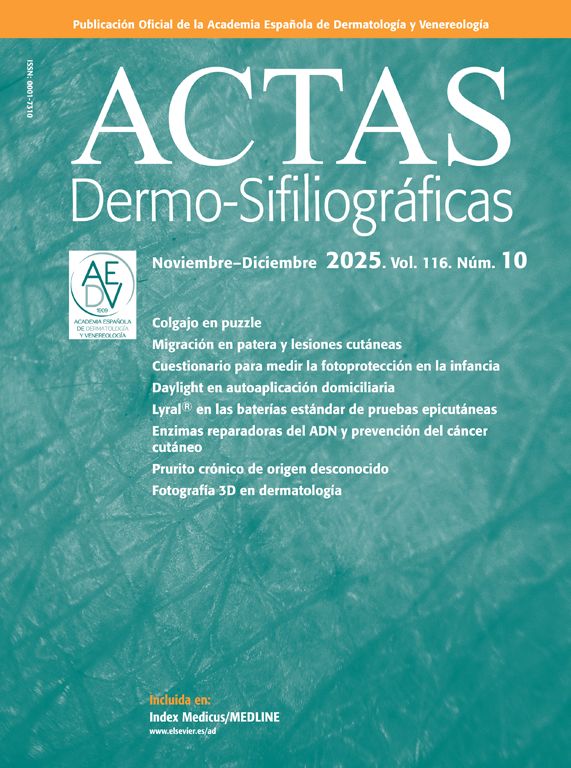A 5-year-old child consulted with a 2-month history of hypertrichosis of geometric distribution on his right arm (Fig. 1A). The lesion had appeared 2 weeks after getting a henna tattoo during the summer holidays and became more evident as the tattoo lost its color. The child did not exhibit eczema or pruritus. Dermoscopy revealed the presence of increased number and diameter of hairs (Fig. 1B).
Hypertrichosis is a rarely described reaction following the use of henna tattoos, with a higher frequency in children and young people. Cause is unknown. It is sometimes associated with allergic contact dermatitis related to the use of additives that are used to make the dye darker and longer-lasting on the skin. However, it could also be due to a direct effect of henna on the skin, as cases of hypertrichosis in asymptomatic patients have been reported. The resolution of hypertrichosis usually occurs within 3–4 months, without any treatment.





